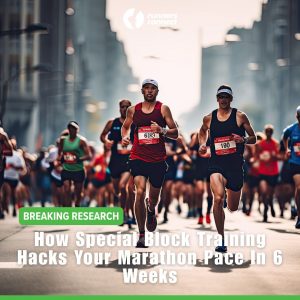Cold weather, high humidity, or a busy schedule can force your running workout indoors.
The treadmill is a common fixture at gyms everywhere, but how, if at all, should you adjust your workouts when running on a treadmill? Is the treadmill harder or easier than running outside?
You’ll find plenty of opinions on either side of that question, but the clearest answers on the ins and outs of treadmill running come from the scientific research.
Weighing the evidence on treadmill running
Exercise scientists are keenly interested in the idiosyncrasies of treadmill running as it compares to outdoor running because almost all exercise science research is done using treadmills.
Since the goal is to generalize findings on, say, VO2 max or running economy to make predictions about how runners will perform outside of the lab, it’s hugely important for a researcher to know the details of how humans run on treadmills compared to outdoors. As you’d probably guess, there are dozens of studies on the topic.
A recent addition to the pile of research attempted to synthesize the results of all of the previous studies in a systematic way (1). The article, published in 2019 by a team of researchers in Australia, the Netherlands, and the United States, pooled the results of every treadmill-versus-outdoors article that had been published, with a few restrictions: the study had to be on adults, and it had to directly compare the same runners on a treadmill versus running outdoors.
By leveraging powerful meta-analytic techniques, the researchers were able to examine the results of 34 studies, analyzing them almost as if it were one massive study.
Treadmill incline and treadmill effort
The findings of the review upended some popular dogma, even among exercise scientists.
A treadmill incline of 1% was long assumed to be necessary to offset the lack of air resistance on a treadmill compared to running outside. This practice can be traced to a 1996 study that makes the case for the 1% incline, which has been cited over 700 times (2).
However, the 2019 meta-analysis study found that oxygen consumption was equal between treadmill running and outdoor running, even at 0% (no incline) and even at speeds as fast as six minutes per mile.
A few other physiological parameters did differ between treadmill and outdoor running.
Strangely, both heart rate and perceived exertion (how “hard” the running felt) followed a U-shaped curve that depended on speed.
- Compared to running outside at the same speed, running at slow paces on a treadmill feels easier, and elicits a lower heart rate.
- Running at fast speeds on a treadmill generates higher heart rates and a harder perceived effort!
- Heart rate and perceived effort were about equal between treadmill and outdoor running at moderate speeds, ranging from 6:50 to 8:45 mile pace.
The researchers hypothesized that the increased effort and heart rate at high speeds might be coming from a few different factors:
First, there’s the danger of falling off when running on a treadmill at a high speed.
Second, at high speeds, the heat buildup on a treadmill starts to become a bigger problem. Outside, you’ve got more air flowing over your body to cool you off—not so on a treadmill.
Finally, most runners just are not very experienced at running fast on a treadmill. Even if they do their easy runs on the treadmill, most of their race-specific work is likely to be on the roads or on a track.
Treadmills and workout performance
Physiological variables are of interest to academics, but what most runners really care about is performance.
How does absolute performance stack up on the treadmill versus outside?
When the research team pooled the results, they found that running performance was consistently worse on the treadmill, whether it was a performance test over a set distance or a set time.
The authors chalked this up to the “U-shaped curve” mentioned earlier. At high speeds, treadmill running feels harder, and elicits a higher heart rate. As such, you can’t go quite as fast or quite as far.
Does the brand of treadmill matter?
One limitation of a meta-analytic approach like the one taken by this recent paper is that it is vulnerable to subtle differences that vary from study to study. A great example of this weakness is the brand of treadmill: not all treadmill studies use the same model or manufacturer.
Indeed, other research published in 2017 has shown that the physiological effort required to run on a treadmill can vary by five to seven percent depending on the stiffness of the treadmill platform (3).
Just like a track, stiffer is better: a firm platform means more energy return, whereas a softer, “spongy” treadmill platform means less energy return.
While there’s no standardized way to test a treadmill platform for stiffness, your body will be able to tell pretty quickly whether a treadmill is firm, soft, or somewhere in between.
The main takeaways on treadmills
So, what to make of all of this research?
First, unless you’re running faster than six minutes per mile, you don’t need to worry about setting the treadmill incline to make the effort equal to outdoor running. The oxygen demand will stay the same, but setting the incline higher could increase stress on your body, according to a study published in 2019 by biomechanics researchers at Vanderbilt University (4).
Second, don’t be surprised if your easy runs feel easier on a treadmill, but your workouts feel harder: that’s exactly what the research says you should expect. The best match between outdoor running and treadmill running appears to be at speeds from about 8:45 to 6:50 per mile—if you are outside this range, you might want to adjust the parameters of your run or your workout to take into account the differences between treadmill and outdoor running: faster easy runs, and slightly backed-off workouts.
Finally, be aware that your performance in a tough interval session or a fast tempo run is probably going to be worse on the treadmill. However, you might be able to mitigate this effect by running on a treadmill with a firm, responsive platform as opposed to a soft and spongy one.
Taking all of these factors into account will help you know what to expect when you compare your effort level versus the pace on the treadmill display.






One Response
My question: if I run on the treadmill at a harder effort than on the roads (its winter here), will my running performance on the roads get worse? My HR is higher than on the roads. I run on an undulating treadmill, using the incline/decline function. I try to run outside 2-3 days a week and the other days run harder on the treadmill. I find running on a constant 1% incline really tough and tough on my legs and I am much slower doing so.